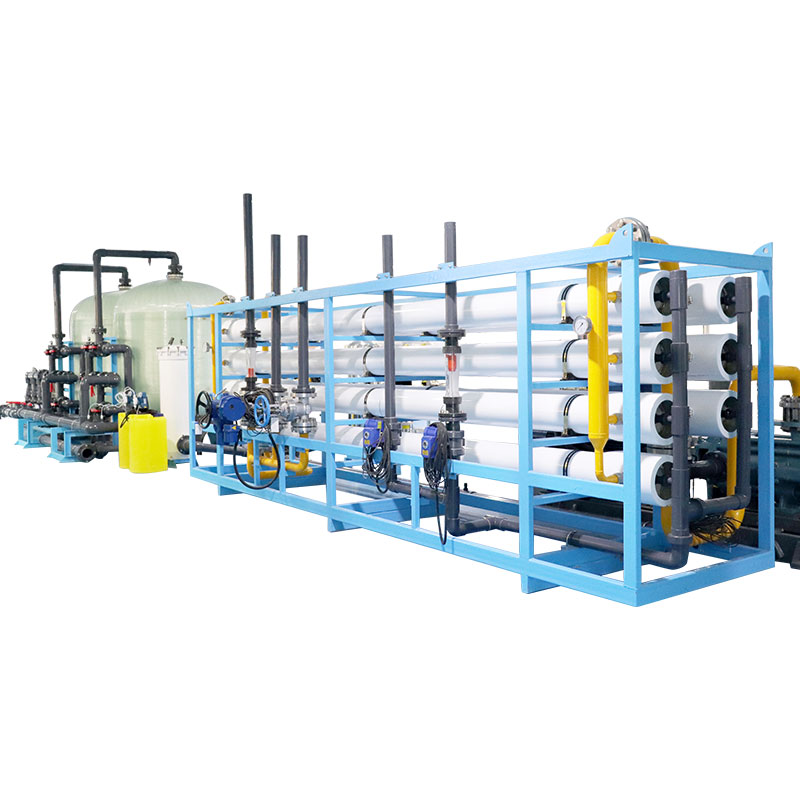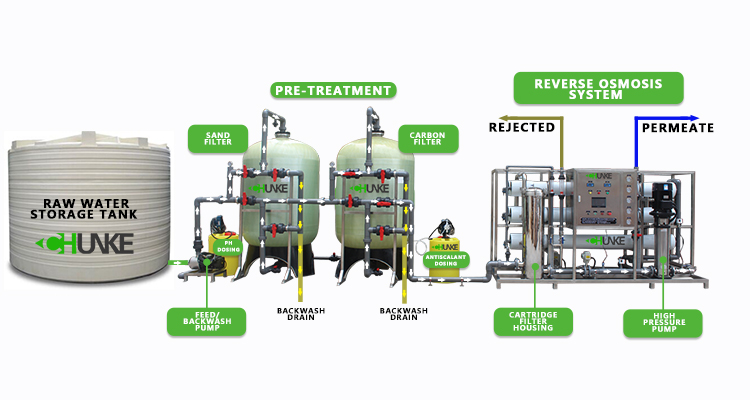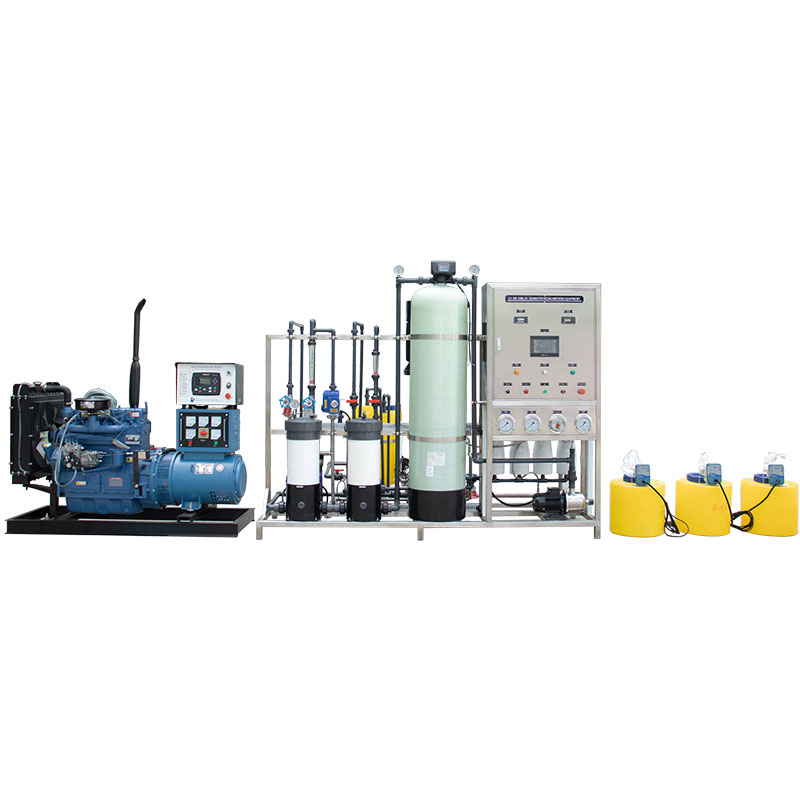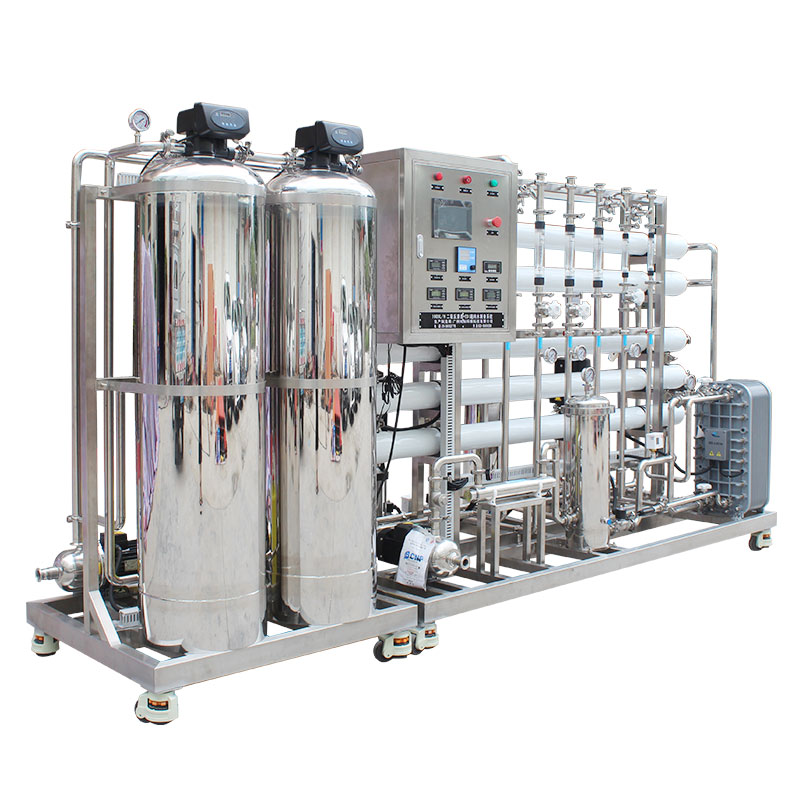Can water treatment equipment filter out color?
In modern society, water quality issues are increasingly concerned, and water treatment technology has been widely used. People not only require drinking water to be tasteless and odorless, but also require clear and transparent water. However, in some water sources, water color problems still exist, such as brown water in rivers and dark pollutants in industrial wastewater.
So, can water treatment equipment effectively filter out these colors? This article will explore this issue in depth and analyze the performance of various water treatment technologies in color removal.

What is the source of color in water?
To understand how water treatment equipment removes color from water, it is first necessary to clarify the source of color in water. Generally speaking, the color in water mainly comes from these substances: organic matter, inorganic matter, industrial dyes and suspended particles.
Water bodies in nature often contain natural organic substances such as humic acid and fulvic acid, which come from the decomposition process of plants and animals. They usually give water bodies a yellow to brown color and are the main reason for the discoloration of many rivers and lakes. Some inorganic compounds, such as metal ions such as iron and manganese, when present in oxidized form in water, will cause the water body to appear red, brown or black. These substances are usually found in groundwater or polluted water bodies.
Wastewater discharged during industrial production often contains various dyes or colorants. These substances are brightly colored and difficult to remove through simple natural processes. They are commonly found in wastewater from industries such as textiles and papermaking. Suspended particles in water bodies, such as silt and fine inorganic or organic particles, can also cause water bodies to appear colored. Although these substances are not strictly "soluble" pollutants, they can scatter light and make water bodies appear opaque or colored.

Can water treatment equipment filter out color?
There are a variety of water treatment equipment and technologies available on the market to choose from for water color problems. The following are several common water treatment methods and their effects on color removal.
1. Activated carbon filtration:
Activated carbon is one of the most common water treatment media and is widely used in household and industrial water treatment systems. Activated carbon has a very strong adsorption capacity and can effectively remove organic matter from water, especially humic acid and fulvic acid, the main organic pollutants that cause water color.
Advantages of activated carbon filtration:
● Can effectively remove color caused by organic matter.
● Removes odors, odors and some organic pollutants at the same time.
Disadvantages of activated carbon filtration:
● Limited effect on inorganic metal ions, industrial dyes, etc.
● Filter elements need to be replaced regularly, otherwise the adsorption effect will be lost.
2. Redox filtration:
This technology is mainly used to remove metal ions such as iron and manganese in water. Commonly used oxidants include chlorine, ozone, etc. Under oxidation, these metal ions will form water-insoluble precipitates, which can then be removed by filtration equipment.
Advantages of redox filtration:
● Significant effect on inorganic pollutants such as iron and manganese.
● Can effectively improve water transparency.
Disadvantages of redox filtration:
● Limited effect on organic matter and industrial dyes.
● Need to be used in combination with other filtration technologies.
3. Reverse osmosis system:
Reverse osmosis (RO) system is a technology that uses a semipermeable membrane to separate dissolved substances in water to achieve water purification. It has a good removal effect on various soluble pollutants, including organic matter, inorganic matter, metal ions, etc.
Advantages of reverse osmosis system:
● Comprehensive removal effect, including various pollutants including color.
● Can provide high-purity clear drinking water.
Disadvantages of reverse osmosis system:
● High equipment cost and high energy consumption.
● Requires regular maintenance and high replacement cost of membrane elements.

4. Ultrafiltration system:
Ultrafiltration (UF) technology uses a coarser membrane than reverse osmosis to filter suspended particles, bacteria, viruses and other macromolecules in water. Although the pore size of the ultrafiltration membrane is large and cannot remove all soluble substances, it has a good removal effect on suspended particles and some organic substances in water.
Advantages of ultrafiltration system:
● Effective for color caused by suspended particles.
● Simple maintenance and low cost.
Disadvantages of ultrafiltration system:
● Limited effect on soluble organic and inorganic matter.
● Usually needs to be used in combination with other treatment technologies.
5. Coagulation and sedimentation technology:
Coagulation and sedimentation technology adds coagulants such as aluminum sulfate or polyaluminum chloride to water to aggregate and precipitate suspended particles and some dissolved organic matter in the water, and then removes them through sedimentation tanks. This technology is often used in large water treatment plants to treat surface water.
Advantages of coagulation and sedimentation technology:
● Effective for suspended particles and some organic matter.
● Suitable for large-scale water treatment at a relatively low cost.
Disadvantages of coagulation and sedimentation technology:
● Other treatment technologies are required to remove dissolved pollutants.
● The process is complex and the operation requirements are high.
Application scenarios of different water treatment equipment
After understanding the above-mentioned water treatment technologies, you can choose the appropriate equipment according to the specific application scenarios. For example:
● Household drinking water treatment: If there are more organic substances in the water source, resulting in a slight yellow or brown water quality, you can choose an activated carbon filter or a reverse osmosis system. Activated carbon can effectively remove organic matter and odors, while reverse osmosis systems can provide the purest drinking water.
● Industrial wastewater treatment: For wastewater containing a large amount of industrial dyes or heavy metal ions, simple activated carbon or ultrafiltration technology often cannot achieve the desired effect. At this time, it is necessary to combine redox technology or reverse osmosis system, or even use chemical treatment methods such as coagulation and sedimentation to achieve the purpose of color removal.
● Municipal water treatment: In municipal water treatment plants, multi-stage treatment processes such as coagulation and sedimentation, activated carbon adsorption and reverse osmosis are usually used to ensure the transparency and safety of water supply.

Technical challenges of filtering color
Although existing water treatment technologies can remove color from water to a large extent, there are still some technical challenges in actual operation. First, the water quality components of different water sources are different, and a single technology is difficult to fully cover all situations. Secondly, the molecular structure of some industrial dyes is very stable, and it is difficult to completely remove them by traditional physical or chemical methods. It is necessary to combine multiple technologies or use special chemical reagents. Finally, the cost of color removal is also an important factor that users need to consider. Advanced water treatment technologies, such as reverse osmosis and redox, although the effect is significant, the corresponding equipment investment and operating costs are also high.
Conclusion
Water treatment equipment can effectively remove color from water, but its effectiveness depends on the technology and type of equipment used. For water bodies containing organic matter, activated carbon and reverse osmosis systems are ideal, while water bodies containing inorganic metal ions or industrial dyes may require the use of redox or coagulation precipitation technology. When choosing water treatment equipment, users should fully consider water quality, treatment goals and cost factors to ensure that the most appropriate equipment is selected to achieve the best water purification effect.




